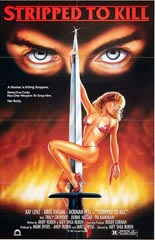
 Who is killing the skanky strippers of the miserably dank Rock Bottom strip club? Middle-aged hottie cop Cody Sheehan (Kay Lenz, 1986’s House) goes undercover to find out. During her investigation and to her surprise, she realizes she likes removing her clothes before the lustful gaze of strangers. (Not to my surprise, I liked her removing her clothes, too.)
Who is killing the skanky strippers of the miserably dank Rock Bottom strip club? Middle-aged hottie cop Cody Sheehan (Kay Lenz, 1986’s House) goes undercover to find out. During her investigation and to her surprise, she realizes she likes removing her clothes before the lustful gaze of strangers. (Not to my surprise, I liked her removing her clothes, too.)
When she first performs, it’s both demeaning and laughable, yet Sheehan is egged on by her earring-wearing detective partner (a barely emoting Greg Evigan, DeepStar Six). And kicking off the final decade of his long career, Norman Fell (Mr. Roper of TV’s Three’s Company) is the cigar-chewing club owner who demands his dancers stay topless for a full 30 seconds — a stand-in for executive producer Roger Corman, perhaps?
 Coming from Corman, the movie should be more fun. Despite an intriguing (if purely exploitative) premise, Stripped to Kill begins with several strikes against it, not the least of which is being visually hampered. As with virtually all of Corman’s Concorde output, Stripped is shot flat and murky — not the finest choice for a film taking place mostly at night, especially one built upon copious nudity.
Coming from Corman, the movie should be more fun. Despite an intriguing (if purely exploitative) premise, Stripped to Kill begins with several strikes against it, not the least of which is being visually hampered. As with virtually all of Corman’s Concorde output, Stripped is shot flat and murky — not the finest choice for a film taking place mostly at night, especially one built upon copious nudity.
Under actress-turned-director Katt Shea Ruben (for example, going from Hollywood Hot Tubs to Poison Ivy), Kill slows to a near-crawl, partially because every character but Sheehan is repellent. Even the film holds contempt for them; the strippers’ dressing room is marked “SLUTS.” Lenz, long a terrific actress, deserved a better showcase; to her credit, she acts as if it were all the same. —Rod Lott

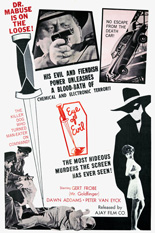
 Fritz Lang’s final film,
Fritz Lang’s final film, 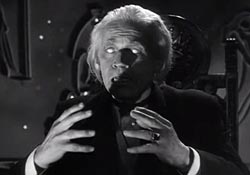
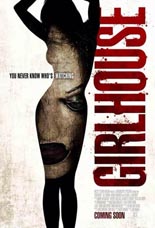
 Look, it’s very simple: Liken a fat kid’s sexual organ to an acorn, and he’ll grow up to be a cross-dressing serial killer. Moonlight as a porn model for college tuition, and that serial killer will target you. The digital-age slasher
Look, it’s very simple: Liken a fat kid’s sexual organ to an acorn, and he’ll grow up to be a cross-dressing serial killer. Moonlight as a porn model for college tuition, and that serial killer will target you. The digital-age slasher 

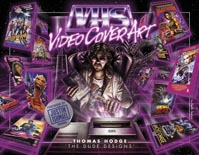
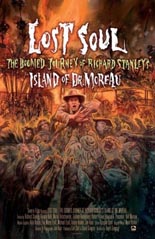
 If
If 